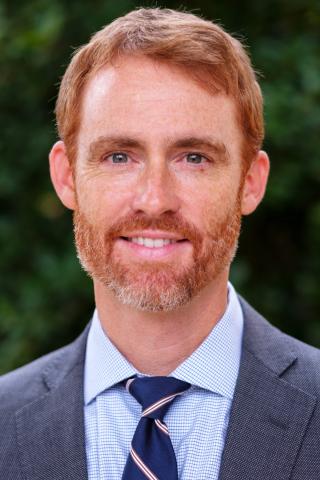For the first time since 1995 we have a new felony punishment chart for Structured Sentencing. Two pieces of legislation from the past session, S.L. 2009-555 and S.L. 2009-556, made changes that will become effective December 1, 2009 and apply to offenses committed on or after that date. The first law restructures the point ranges for prior record level for felony sentencing. Perhaps most significantly, a person with one prior record point will, under the new law, still be considered Prior Record Level I for sentencing. The remaining levels are recalibrated so that each covers four points - under current law, Prior Record Level IV covers six points while the other levels cover four apiece. Defendants on the low end of the prior record scale will generally benefit from the change, whereas those with 14 or more points might find themselves in a higher level on the new grid. The second law changes the minimum sentence durations for Class B1-G felonies so that they grow by a standard 15 percent increment as you move from left to right on the grid within a particular offense class. So, for example, if the minimum presumptive sentence for a Class E, Level I offender is 20 months, then the minimum presumptive sentence for a Class E, Level II is 15 percent greater than that (23 months); the minimum presumptive sentence for a Class E, Level III is 15 percent greater still (26 months); and so forth as you move across the grid. The range of minimum sentences in Prior Record Level I in each offense class is the same as under current law, and the ranges for Class H and I felonies remain unchanged. The effect of these changes on individual defendants varies depending on where they fall on the grid - sometimes the numbers are higher than they are under current law, sometimes lower. This year's changes to the law were motivated - at least in part - by the projected shortfall of prison beds in the state in the coming years, and a realization that prison building alone could not accommodate the increased population. The table below shows the Sentencing Commission's projection of the combined estimated impact of the two bills. As you can see, on balance the changes result in a prison bed savings over the course of the next decade. Fiscal year Combined Impact 2010/11 -244 2011/12 -303 2012/13 -419 2013/14 -542 2014/15 -759 2015/16 -1,117 2016/17 -1,436 2017/18 -1,716 2018/19 -1,911 2019/20 -2,078 Longtime readers may recall that I wrote about these proposed changes back in February (here), noting that they stemmed from a Sentencing and Policy Advisory Commission report from 2002. That report discussed additional alternatives (involving the habitual felon and post-release supervision laws) that were projected to save as many as 5,000 beds over a decade. The new laws will help, but they alone won't be able to bridge the projected difference between population and system capacity - a gap expected to grow to nearly 7,500 by 2018, even with DOC employing its expanded operating capacity. You can learn more about the Sentencing Commission's ridiculously accurate prison population projections here. You can also read about the broader costs of incarceration in a blog post by our Dean, Mike Smith. A printable version of the new chart is here. (Thank you to the Sentencing Commission for providing it.)
- AboutAs the largest
university-based local
government training,
advisory, and research
organization in the United
States, the School of
Government serves more
than 12,000 public officials
each year. - Browse by RoleThe School provides
content and resources for a
wide array of local
government and judicial
officials in North Carolina.Select your role to explore
all related content.Local and State Government - Browse by TopicThe School provides content
and resources on a wide array
of topics in local government
and judicial administration in
North Carolina.Select a topic to explore all
related content.Local and State Government- State Government
- Planning and Development Regulation
- Community and Economic Development
- Environment
- General Structure and Authority
- Health and Human Services
- Human Resources
- Information Technology
- Intergovernmental Relations
- Leadership and Management
- Local Government Finance
- Open Government
- Other Local Government Functions and Services
- CoursesThe School of Government
offers up to 200 courses,
workshops, webinars, and
professional conferences
each year. - PublicationsThe School of Government
publishes essential books,
manuals, reports, articles,
bulletins, and other print and
online content related to state
and local government. - BlogsFaculty write for a number
of School of Government
blogs providing timely
updates on emerging issues. - ResourcesThe School of Government
offers information and
services related to a wide
range of topics relevant to
government and judicial
officials—in-person and on a
variety of platforms.- Blog Posts
- Centers and Services
- Frequently Asked Questions
- Knapp Library
- Legal Summaries
- Listservs
- Microsites
- Tools and Apps
Timely updates on emerging issuesSpecialized training/research hubs and consulting servicesAggregated answers to common questions on a variety of topicsPrint and online materials and research expertiseBrief descriptions of legal cases, bills, or legislative activityInformation exchanges for peers and faculty expertsIn-depth or aggregated content for local government and judicial officialsOnline and mobile tools for employees on-the-go - Master of Public
Administration ProgramThe UNC MPA program prepares public service leaders. The program is offered in two formats: on-campus and online.For more information, visit mpa.unc.edu - GivingThe School of Government depends on private and public support for fulfilling its mission. Your gift will make a lasting impact on the quality of government and civic participation in North Carolina.
- Knapp LibraryThe Joseph Palmer Knapp Library houses a large collection of material on state and local government, public administration, and management to support the School's instructional and research programs and the educational mission of the Master of Public Administration program. Reference and research services are available to all residents of North Carolina, and additional assistance is available to state and local government personnel, both elected and appointed.



